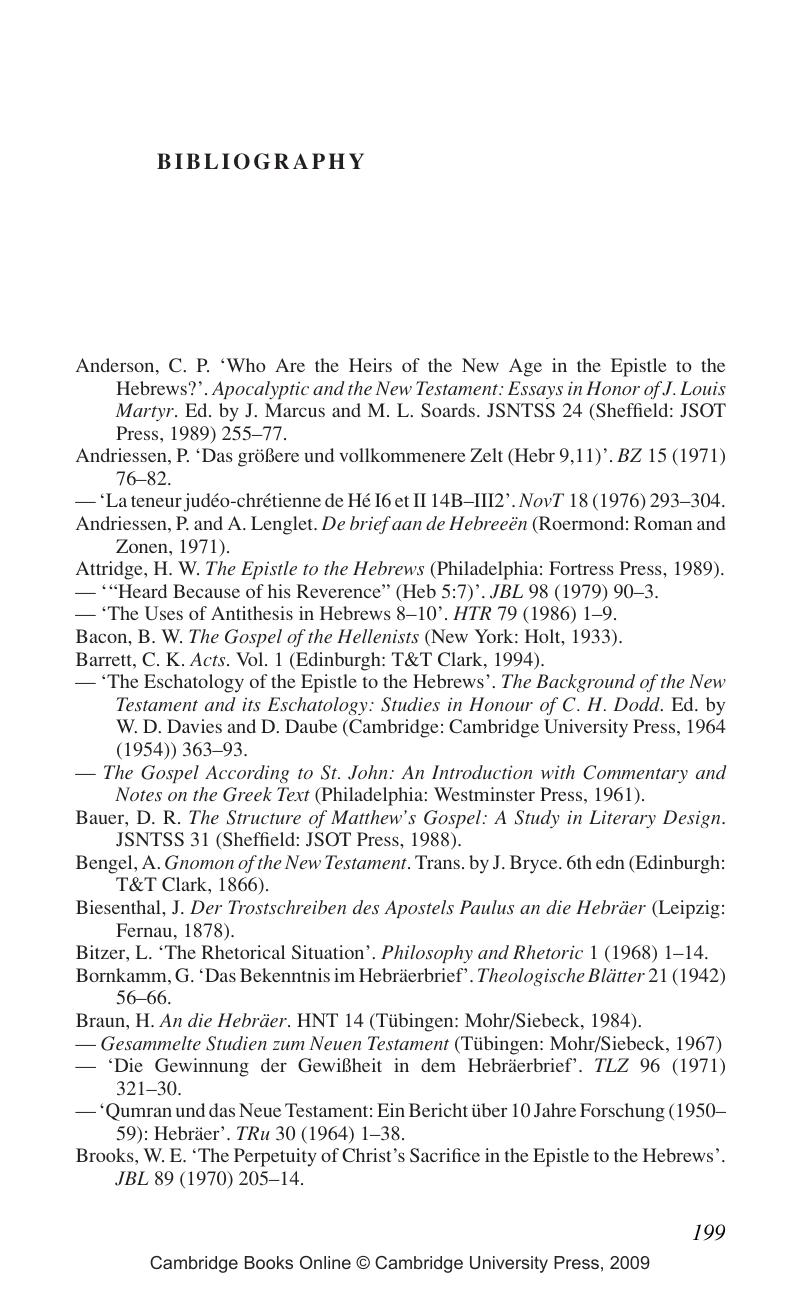Bibliography
Published online by Cambridge University Press: 22 September 2009
Summary

- Type
- Chapter
- Information
- Cosmology and Eschatology in HebrewsThe Settings of the Sacrifice, pp. 199 - 209Publisher: Cambridge University PressPrint publication year: 2007



